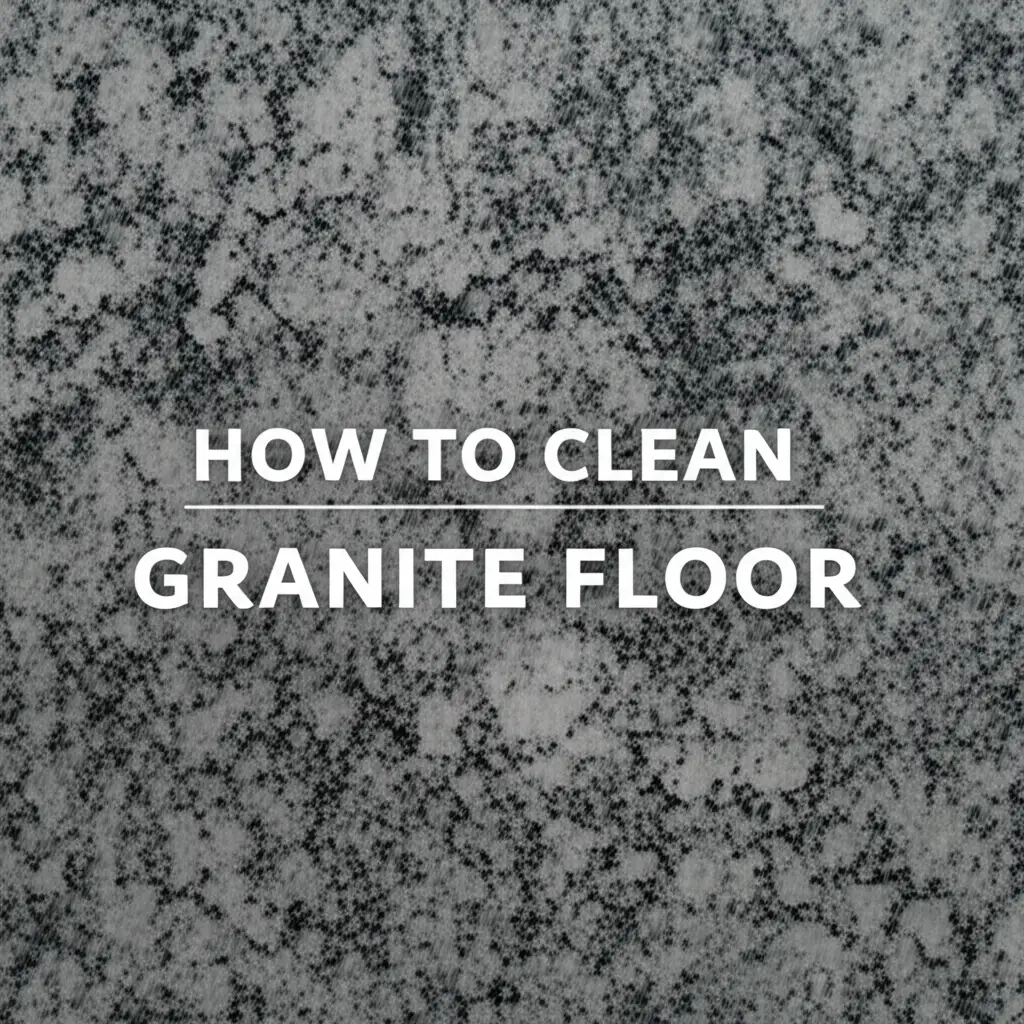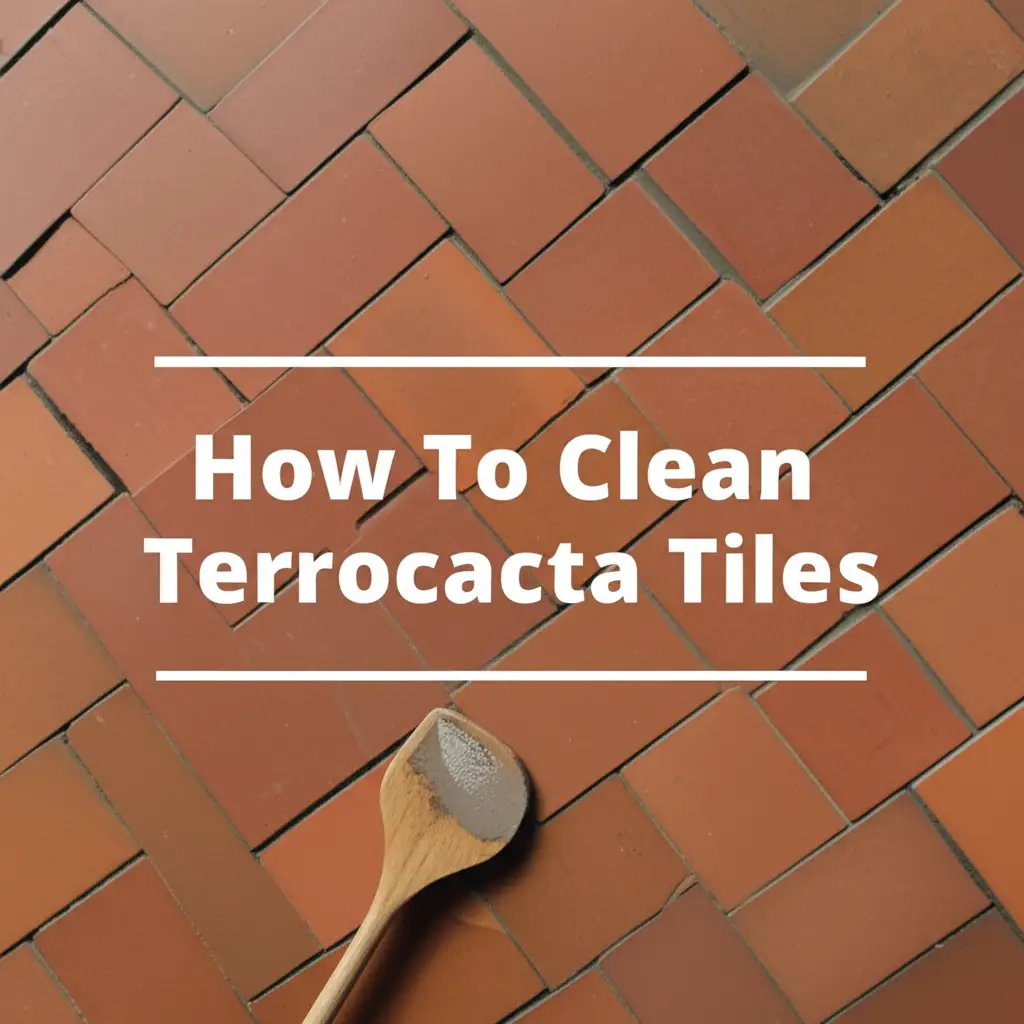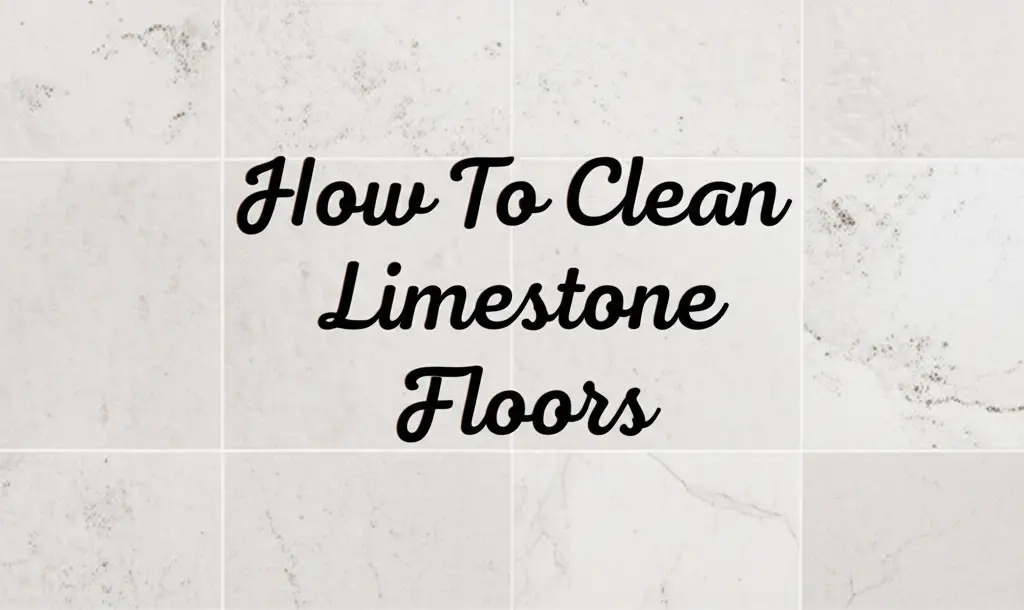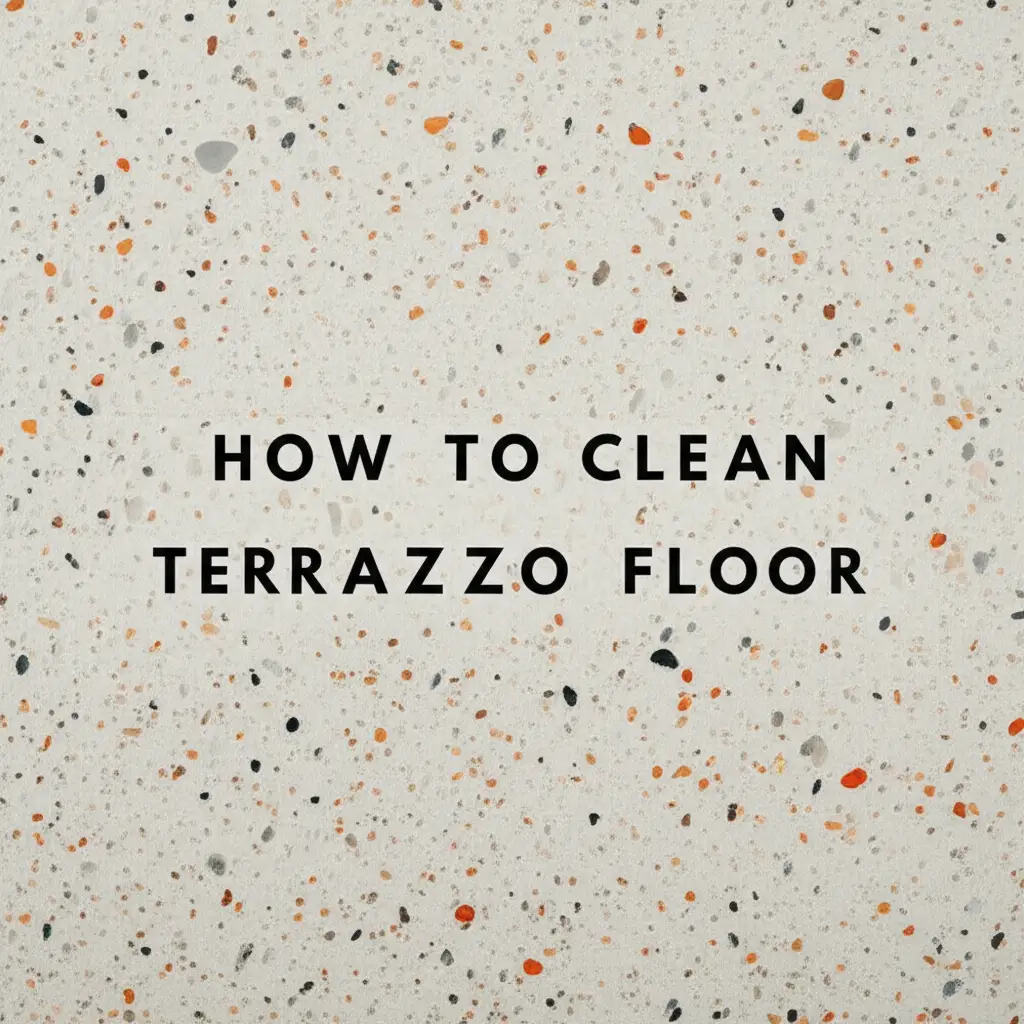· Floor Care · 16 min read
How To Clean Granite Floor

How to Clean Your Granite Floor: A Complete Guide
Granite floors bring elegance to any space. Their natural beauty and durability make them a popular choice. However, granite requires specific care to keep its shine. Improper cleaning methods can dull its finish or cause damage. This guide shows you how to clean granite floor surfaces correctly. We will cover daily cleaning, deep cleaning, stain removal, and protective measures. You will learn to maintain your granite floor’s pristine look for years.
Takeaway
- Daily Care: Sweep or vacuum regularly. Mop with pH-neutral cleaners.
- Deep Cleaning: Use specialized granite cleaners for thorough cleaning.
- Stain Removal: Address spills quickly. Use poultices for set-in stains.
- Sealing: Re-seal granite floors periodically to protect them.
- Avoid Harmful Products: Do not use acidic or abrasive cleaners.
To clean granite floor surfaces, regularly sweep or vacuum loose dirt. Then, damp mop with a pH-neutral cleaner designed for natural stone. Promptly wipe up spills to prevent etching and stains. For tough spots, use specific poultices or specialized granite stain removers.
Understanding Your Granite Floor
Granite is an igneous rock formed from magma. It is known for its strength and unique patterns. Granite floors offer a beautiful, lasting surface. This natural stone is dense and durable. However, it is also porous to some degree.
Pores in granite can absorb liquids. This absorption leads to stains if spills remain on the surface. Granite is also sensitive to acidic substances. Acids can etch the surface, removing its polish. Understanding these properties helps you care for your granite floor correctly. Proper cleaning preserves its beauty and extends its life.
Granite floors add a touch of luxury to homes and businesses. Many people choose granite for its aesthetic appeal and long-term value. It stands up well to foot traffic. Yet, this durability does not mean granite is maintenance-free. Regular and correct cleaning is essential for keeping granite in top condition. This ensures your floor remains a highlight of your space.
Essential Tools and Cleaning Solutions
Cleaning granite floors needs the right tools and products. Using the wrong items can cause damage. We aim to keep your floor looking great without harm. Choose products specifically made for natural stone.
First, you need a soft-bristle broom or a vacuum cleaner with a hard floor attachment. These tools remove loose dirt and grit. A microfiber mop is also crucial. Microfiber mops are gentle on surfaces and absorb dirt well. You should have a few mop heads for different cleaning tasks.
For cleaning solutions, always use a pH-neutral cleaner. Many general-purpose cleaners are too acidic or alkaline for granite. These harsh chemicals can etch the stone or strip its sealant. Look for cleaners labeled “safe for natural stone” or “granite cleaner.” You can also make a simple solution with warm water and a small amount of mild dish soap. Test any new cleaner in an inconspicuous area first. This step ensures it does not harm your floor.
Keep a supply of soft cloths or sponges ready for spills. These help you clean up messes quickly. Quick action prevents stains from setting. Remember, proper tools make the cleaning process easier and safer for your granite floor. For comprehensive advice on keeping all your stone surfaces pristine, read more about how to clean stone floor.
Daily and Weekly Granite Floor Maintenance
Regular maintenance is key to a beautiful granite floor. It prevents dirt buildup and reduces the need for deep cleaning. Daily and weekly tasks keep your floor looking its best. These simple steps protect your investment.
Start each day by sweeping or vacuuming your granite floor. This removes dust, dirt, and grit. These small particles can scratch the surface when walked on. Use a soft-bristle broom or a vacuum with a hard floor setting. Avoid beater bars on vacuums, as they can scratch polished surfaces. Regular dry cleaning keeps the surface free from abrasive debris. This routine is the first line of defense for your granite.
For weekly cleaning, damp mop your granite floor. Fill a bucket with warm water and add a few drops of pH-neutral granite cleaner. Do not use too much cleaner; a little goes a long way. Dip your microfiber mop into the solution, then wring it out thoroughly. The mop should be damp, not soaking wet. Excessive water can leave streaks or seep into grout lines. Mop the entire floor in small sections. Rinse the mop frequently in clean water.
After mopping, you can dry the floor with a clean, dry microfiber cloth. This prevents water spots and streaks. Always clean spills immediately. Blot liquid spills with a soft cloth. Do not wipe, as wiping spreads the spill. Timely action prevents most stains from forming. By following these daily and weekly steps, you preserve the natural beauty and shine of your granite floor.
Deep Cleaning Your Granite Floor
Deep cleaning is necessary for granite floors, even with regular maintenance. This process removes built-up grime and restores shine. You should deep clean your granite floor every few months. The frequency depends on foot traffic. This method is more thorough than daily mopping.
Begin by clearing the entire floor area. Remove all furniture, rugs, and decor. Sweep or vacuum the floor thoroughly. This step removes all loose dirt. It prepares the surface for the cleaning solution. You want to avoid rubbing dirt into the stone during the deep cleaning process.
Prepare your deep cleaning solution. Use a specialized granite floor cleaner. Follow the product instructions for dilution ratios. Some cleaners are ready-to-use, others require mixing with water. Always use a pH-neutral formula designed for natural stone. Harsh chemicals can damage granite. Apply the solution to a small section of the floor. Let it sit for the recommended dwell time. This allows the cleaner to break down dirt.
Use a clean microfiber mop or a soft-bristle brush to scrub the floor gently. Work in small sections to ensure thorough cleaning. Pay attention to grout lines. Dirt often collects there. After scrubbing, rinse the section thoroughly with clean water. Use a second clean mop or wet-vac to remove all cleaner residue. Rinse until the water runs clear. Dry the floor completely with a clean, dry microfiber cloth. This prevents water spots and streaks.
For granite floors that require specific pre-treatment, like before sealing, understanding the cleaning process is vital. Find detailed steps on how to clean granite before sealing. This helps ensure optimal results for protective treatments.
Tackling Tough Stains on Granite Floors
Even with careful maintenance, granite floors can develop tough stains. Different stains require different approaches. Acting fast is crucial. The longer a stain sits, the harder it is to remove. Knowing the stain type helps you choose the right method.
Oil-Based Stains
Oil-based stains come from grease, cooking oil, or cosmetics. These stains appear as dark spots on the granite. To remove them, you need to draw the oil out of the stone. Make a poultice using baking soda and hydrogen peroxide. Mix them to form a thick paste, like peanut butter. Apply a thick layer of this paste over the stain. Cover the poultice with plastic wrap. Tape the edges down to seal it. Let it sit for 24-48 hours. The poultice draws the oil from the granite. After the time, remove the plastic. Allow the paste to dry completely and flake off. Scrape off the dried poultice with a plastic scraper. Rinse the area with clean water. Repeat if the stain persists. For other general granite stain issues, learn how to clean granite countertops stains.
Water Spots and Mineral Deposits
Hard water can leave mineral deposits and white spots on granite. These are often dull and cloudy. To address these, you need a different approach. Mix warm water with a few drops of mild dish soap. Use a soft cloth to gently scrub the affected area. For stubborn hard water stains, use a stone-specific hard water remover. Always follow product instructions carefully. Rinse thoroughly with clean water afterward. Immediately dry the area to prevent new spots. If hard water stains are a frequent problem, detailed guidance is available on how to clean hard water stains from granite.
Organic Stains
Organic stains come from food, coffee, tea, or pet waste. They usually appear as brown or pinkish spots. These stains can often be removed with hydrogen peroxide. Mix 12% hydrogen peroxide with a few drops of ammonia. Apply this solution directly to the stain. Let it sit for a few minutes. Then, blot the area with a clean cloth. Rinse well with water. For pet stains, ensure the area is fully sanitized after cleaning.
Paint and Wax Stains
Paint or wax spills can be challenging on granite floors. For paint, if it is still wet, wipe it up immediately with a damp cloth. If dried, gently scrape it off with a plastic scraper or razor blade (used very carefully at a shallow angle). Avoid metal tools that can scratch. For wax, first let it harden. Then, gently chip it off. You can use ice to freeze the wax, making it brittle. After removing the bulk, clean any residue with a specialized stone cleaner. For general floor paint removal, refer to our guide on how to clean paint off floor. For wax on floors, specifically, you might find tips on how to clean wax off floor. For greasy floor stains, which share some characteristics with oil-based stains, consider methods from how to clean greasy floor. Always test any stain removal method in a small, hidden area first. This prevents potential damage to your granite floor.
Sealing and Polishing Granite Floors
Sealing and polishing are vital steps for granite floor care. These processes protect the stone and enhance its appearance. Granite is naturally porous, even if dense. Sealers fill these tiny pores. This creates a barrier against spills and stains.
Why Seal Your Granite Floor?
Sealing prevents liquids from soaking into the granite. Without a sealer, water, oil, and other liquids can penetrate the surface. This leads to deep-set stains that are very hard to remove. A good sealer makes your granite floor more resistant to spills. It also protects against etching from acidic substances. The lifespan of a granite sealer varies. It depends on foot traffic and cleaning habits. Most floors need re-sealing every 1-3 years. You can test your sealer’s effectiveness. Pour a small amount of water (about 3 inches in diameter) on a clean, dry spot. Let it sit for 10-15 minutes. If the water beads up, your sealer is still working. If the water absorbs into the stone and darkens it, it is time to re-seal.
How to Re-Seal Your Granite Floor
Re-sealing your granite floor is a straightforward process. First, ensure the floor is perfectly clean and dry. Any dirt or residue trapped under the sealer will remain visible. Use a pH-neutral cleaner for this. Let the floor dry completely, which can take several hours. Next, choose a high-quality impregnating sealer designed for natural stone. These sealers penetrate the stone, offering better protection.
Apply the sealer according to the product instructions. Often, you apply it evenly with a clean, lint-free cloth or a paint pad. Work in small sections. Do not let the sealer dry on the surface. After the recommended dwell time (usually 5-15 minutes), wipe off any excess sealer with a clean, dry cloth. Buff the surface gently to ensure no residue remains. If allowed to dry on the surface, excess sealer can leave a hazy film. Repeat the application if the product recommends multiple coats. Always ensure good ventilation during this process.
Polishing for Shine
Polishing restores the natural luster of your granite floor. This is different from sealing. Polishing enhances the surface shine. For minor dullness, you can use a granite polish. Apply it with a soft cloth and buff the surface. For severely dull or scratched granite, professional repolishing might be needed. This involves specialized equipment and abrasives. It is best left to experts. Regular cleaning and prompt spill cleanup prevent dullness. This maintains your granite floor’s inherent shine. Proper care, including sealing, will help keep your granite floor beautiful. Remember, similar care principles apply to other granite surfaces. To properly maintain other granite areas, read our comprehensive guide on how to clean granite counter tops.
Common Mistakes to Avoid When Cleaning Granite Floors
Cleaning granite floors correctly avoids costly damage. Many common cleaning products and habits harm natural stone. Knowing what to avoid is as important as knowing what to do. Protect your investment by steering clear of these mistakes.
Using Harsh or Acidic Cleaners
This is the biggest mistake. Avoid cleaners containing acid, ammonia, bleach, or harsh abrasives.
- Acids: Vinegar, lemon juice, or generic bathroom cleaners contain acids. These chemicals etch the granite surface. Etching creates dull spots or rough patches. They destroy the polished finish.
- Ammonia and Bleach: These chemicals can degrade the sealer on your granite. They also cause discoloration over time.
- Abrasive Cleaners: Powders or scrubbing pads scratch the surface. They create micro-scratches that dull the stone. Always use pH-neutral cleaners specifically for natural stone.
Allowing Spills to Sit
Granite is porous. Liquids left on the surface can quickly penetrate and stain. This includes water, coffee, wine, or cooking oils. Blot spills immediately with a soft cloth. Do not wipe, as wiping spreads the liquid. Quick action prevents most stains from setting. This is a simple step, yet crucial for protecting your floor.
Using Too Much Water
While mopping, do not over-saturate your granite floor. Excessive water can seep into grout lines and under the tiles. This promotes mold and mildew growth. It can also weaken adhesives. Always wring your mop thoroughly. The mop should be damp, not dripping wet. Dry the floor completely after mopping to prevent water spots and streaks.
Using Dirty Mops or Water
Cleaning with a dirty mop spreads grime. It does not clean the floor. Always use clean mop heads. Change your cleaning water frequently during mopping. Dirty water leaves a film on the granite. This makes the floor look dull. A clean mop and fresh water ensure a truly clean and sparkling finish.
Skipping Sealing
Many people forget to re-seal their granite floors. Sealing is a protective barrier. It prevents stains and etching. Without proper sealing, your granite floor is vulnerable. Test your sealer regularly. Re-seal when needed. This preventive measure saves you from significant stain removal efforts later.
By avoiding these common mistakes, you ensure your granite floor remains beautiful. Proper care protects its integrity and extends its lifespan.
When to Call a Professional for Granite Floor Care
While daily and deep cleaning help maintain your granite floor, some situations call for professional help. Certain problems are beyond typical DIY solutions. Knowing when to consult an expert saves you time and prevents further damage. Professionals have specialized tools and knowledge.
Deep or Set-In Stains
You might encounter very old or stubborn stains. These stains do not respond to your poultice treatments. Professionals have stronger, commercial-grade stain removers. They also have specialized knowledge of different stain types. They can often remove stains without harming the stone. Attempting aggressive DIY methods can sometimes worsen the stain or damage the granite.
Etching or Dull Spots
Acids or harsh chemicals can leave dull, etched spots on your granite. These marks are not stains. They are damage to the stone’s surface. Only a professional can re-hone or re-polish etched granite. They use diamond abrasives and polishing compounds. This restores the original shine and smooth finish. This process is complex and requires specific machinery.
Significant Scratches or Chips
While durable, granite can get scratched or chipped. Heavy objects dropping on the floor can cause this damage. Minor surface scratches might be buffed out with a granite polishing compound. Deeper scratches or chips need professional repair. Experts can fill chips with epoxy. They can grind down and polish deep scratches. This makes the floor look seamless again.
Complete Restoration
Over years of use, a granite floor can lose its luster. It might accumulate various issues. These include widespread dullness, multiple stains, or minor damage. A professional granite restoration service can bring the floor back to life. This involves a multi-step process. It includes deep cleaning, honing, polishing, and re-sealing. It is like a complete overhaul for your granite floor.
Regular Professional Maintenance
For very high-traffic areas, or if you prefer hands-off maintenance, consider scheduled professional cleaning. Experts can periodically clean, inspect, and re-seal your granite floor. This proactive approach ensures your floor always looks its best. It extends the life of your granite. Professionals possess the right tools and expertise. They offer peace of mind. Your granite floor remains beautiful and well-protected.
FAQ Section
How often should I clean my granite floor?
Daily sweeping or vacuuming is ideal to remove grit. Damp mop weekly with a pH-neutral cleaner. Perform a deep clean every few months, or more often in high-traffic areas. This routine keeps your granite looking its best and extends its life.
Can I use vinegar to clean my granite floor?
No, you should never use vinegar on granite. Vinegar is acidic. It will etch the surface of the granite, leaving dull, permanent marks. Always use pH-neutral cleaners specifically designed for natural stone to protect your floor’s finish.
How do I remove streaks from my granite floor after mopping?
Streaks usually happen from too much cleaner, dirty water, or not drying properly. Use less cleaner. Rinse your mop frequently with clean water. After mopping, dry the floor immediately with a clean, dry microfiber cloth. This removes excess moisture and prevents streaks.
How do I know if my granite floor needs to be sealed?
Perform a water test. Pour a small amount of water (about 3 inches) on a clean, dry area. Let it sit for 10-15 minutes. If the water beads on the surface, the sealer is working. If the water soaks in and darkens the stone, it is time to re-seal.
What is the best cleaner for granite floors?
The best cleaner for granite floors is a pH-neutral cleaner specifically formulated for natural stone. Avoid general-purpose cleaners, dish soap, or abrasive products. Stone-specific cleaners protect the sealer and prevent etching, preserving your granite’s shine.
Can I use a steam mop on my granite floor?
Using a steam mop on granite is generally not recommended. High heat and excessive moisture can potentially damage the stone or break down the sealer over time. It can also force moisture into the stone, leading to issues. Stick to damp mopping with pH-neutral cleaners for safe and effective cleaning.
Conclusion
Caring for your granite floor does not have to be difficult. By understanding granite’s nature and following simple steps, you can keep it beautiful for decades. Regular cleaning prevents dirt and grime buildup. It saves you from harder tasks later. Always use the right tools and pH-neutral cleaners. Avoid harsh chemicals that can cause irreversible damage.
Remember to address spills immediately to prevent stains. Periodically re-seal your granite floor. This critical step protects against absorption and etching. While most issues can be handled with proper care, know when to call a professional. They can tackle deep stains, etching, or restore your granite’s original luster. By consistently applying these methods, you will ensure your granite floor remains a stunning feature in your home. Take pride in knowing exactly how to clean granite floor surfaces, keeping them pristine and inviting. Start your new cleaning routine today and enjoy the lasting beauty of your granite.
- granite floor cleaning
- stone floor maintenance
- natural stone care
- granite cleaning tips
- floor care guide




